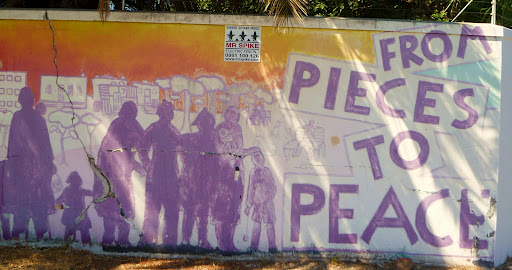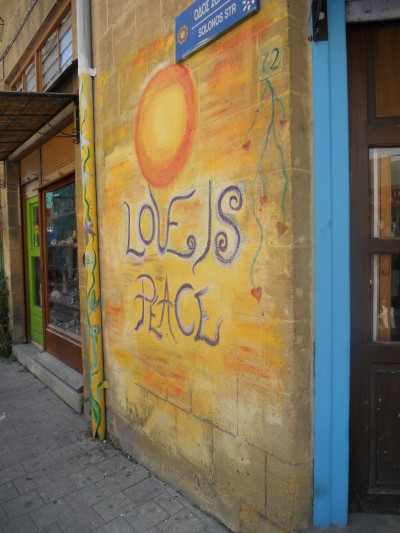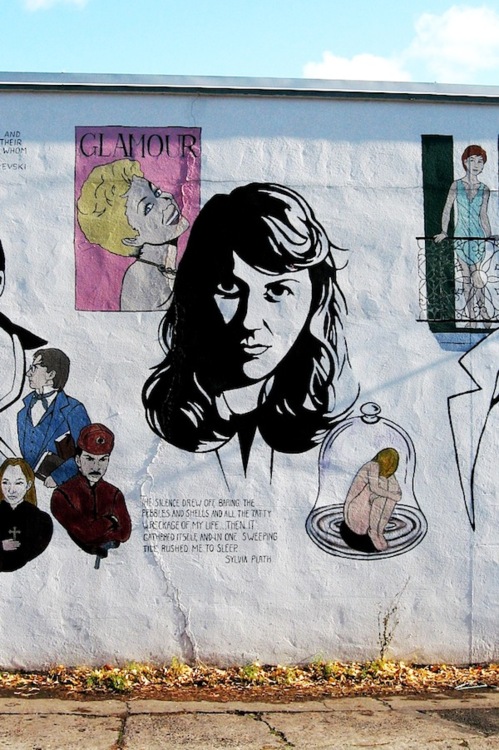From the graffiti capital of the country, New York City, to the streets of Berlin, where graffiti is called ‘spraying,’ from the slums of Capetown to the sewers of Sao Paulo, Bomb Itsplices together images of graffiti around the world to create a world mural of the art.

BOMB IT - Jon Reiss' documentary explores graffiti around the world in all of its different forms, specifically looking at its use as a political medium.
A documentary produced by Jon Reiss, Bomb It follows political graffiti everywhere it flourishes.
The film opens with a night scene of graffiti writers sneaking around a train yard in New York City, whose graffiti scene has surpassed Philadelphia’s, the former graffiti capital of the country. The man attributed with starting the movement in New York, Corn Bread, comments in voiceover that “art is a weapon,” a sentiment reiterated by one artist seen scribbling “voice of the people” on a New York subway map. In places like the Bronx, a labyrinth of run-down areas that at best resemble cities in the aftermath of World War II, graffiti murals are thought to brighten up an otherwise dismal environment.
The camera then turns its attention to a series of European cities, beginning with France, where the artist Blek “focuses on the misery and poverty of the poor in Paris.” A proponent of the school that believes “art must serve a political and social cause,” one of his most touching pieces is of a homeless man sitting on a street corner. Blek began his career drawing rats along the bottoms of the walls, symbolizing the misery and filth the poor endure.

A PICTURE OF POVERTY - French graffiti artist draws the poor and homeless.

RAT CITY - Blek began his artistic career drawing rats around the walls of France, symbolizing the filth of the cities.
In Amsterdam, a teacher by day turns graffiti writer by night. Her work always includes a pair of watchful eyes in an I-see-everything-you-do Big Brother fashion. In London, a soldier having returned from Iraq turned to the streets to express his frustration with the war. One of his political works displays picket-like signs exclaiming, “Stop the War,” “No War,” and “Fuck Party Politics” with the underlining question “Still think you’ve got a say?” Not strictly a political writer, he also did a lovely interpretation of the woman from Lord Byron’s poem, “She Walks In Beauty,” on a busy street corner.

WAR! WHAT IS IT GOOD FOR? - Having returned from fighting in the Middle East, one graffiti artist in London turned to the streets to express his frustration through art.

LITERARY GRAFFITI - Not purely political in his work, the same London artist draws an interpretation of the woman in the famous Lord Byron poem.
Back in the U.S., the talk turns to the fads of train and subway graffiti. Described as “museums on wheels,” trains and subways are top-notch spots for graffiti writers because their work is ensured a high degree of visibility. One New York artist sticks to the subway tunnels, writing angry (and less than artistic) messages on the walls: “NYC is my toilet bowl,” “The poor bail out the rich,” and “death feels like an old friend.” The same artist regularly writes “F You” on NYC police cars.

SLIGHTLY LESS ARTISTIC - One New York graffiti writer confines his work to messages and words lacking color or design.
In Berlin, where graffiti writing is called “spraying,” an artist says he was inspired to take up the art because “the current social situation is fucked up.” His reason is seconded by a Tokyo artist who says that although Japan is a well-controlled country, there is still resistance to the government: “If there was no rebellion, we’d be stagnant.” Such resistance is often reflected in graffiti messages and murals.
A man in Barcelona ensures his resistance to the government will be permanently felt by chiseling his work into walls so that it cannot be painted over. In Cape Town, graffiti was a powerful tool during the apartheid regime.

PEACE - One example of graffiti calling for peace during the Apartheid regime in South Africa.
Artists who wanted to “help toward something” began what they called artistic guerilla warfare by spray painting political demands by the dozen: “Africa: Freedom in Our Lifetime,” “Free South Africa,” “Free Our Leaders,” “Free Mandela,” “Peace,” and “From Pieces to Peace.” One artist attests that his artistic efforts made him “more socially and politically aware.”

DEMANDS - An art piece along a highway advocates for Nelson Mandela's release from prison.

A CRY FOR HELP - Another Cape Town image demands freedom.
In Sao Paulo, another artist seeks to raise awareness about urban deterioration and poverty by painting in the most deteriorated places in the city—landfills and polluted tunnels underneath the city, home to many of the city’s homeless.
The documentary wraps up in Los Angeles by featuring Shepard Fairey’s Andre the Giant/OBEY campaign, an effort to remind the public not to exercise blind obedience to government.

OBEDIENCE AWARENESS - Shepard Fairey's OBEY campaign is intended to make the public less likely to practice blind obedience to government.

















































